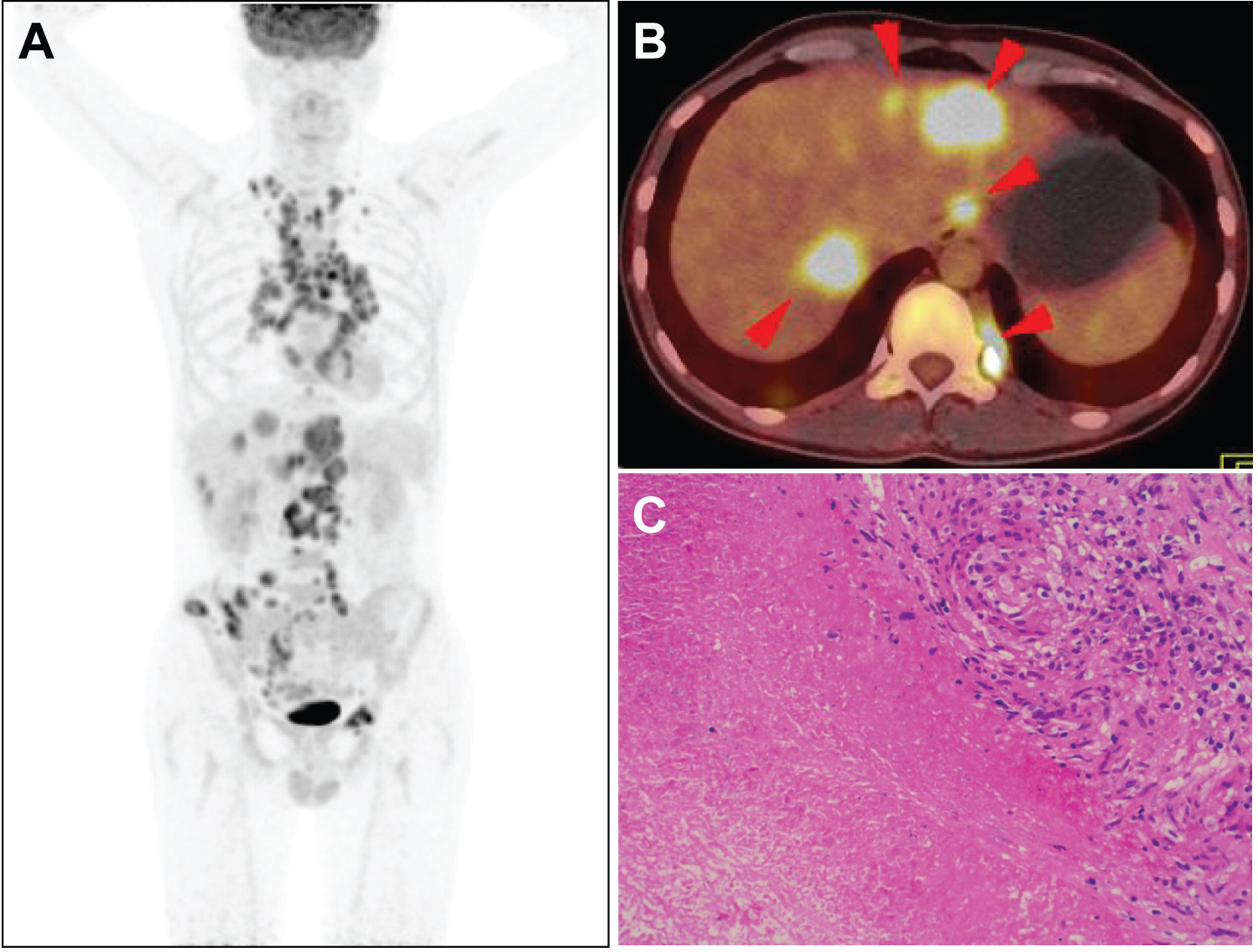Systemic Disseminated Tuberculosis Mimicking Malignancy
A 35-year-old man presented to the outpatient department with a 1-month history of diarrhea, abdominal pain and weight loss. He had no documented medical history. Physical examination was unremarkable. Computed tomography (CT) of the abdomen showed multiple lesions of liver, which was difficult to distinguish from tumor. Considering the ill-defined liver lesions in this patient, 18F-FDG PET-CT was assessed and revealed extensive multi-organ metastases, including several lesions in the liver, lung, vermiform appendix, and multiple skeletal lesions in addition to the mass in the lymph nodes (Figure 1A and Figure 1B). However, a ultrasound-guided liver puncture was performed, and biopsy examination confirmed the typically characteristic caseous necrosis and granulomatous inflammation (Figure 1C). Liver tuberculosis was considered to be the most plausible explanation, but the differential diagnosis of the liver lesions also included metastases, bacterial abscesses and hepatic parasitosis. Mycobacterium tuberculosis was identified by polymerase chain reaction testing, and direct microbiologic detection was negative for the human immunodeficiency virus. After a well-informed discussion of options for anti-tuberculosis interventions with the patient newly diagnosed with disseminated tuberculosis, the decision was made to pursue a 1-year course of combined pharmacotherapy. After the procedure, he clinically recovered with multi-organ lesions disappeared by CT scan.
Acknowledgements
Funding
This work was supported by National Natural Science Foundation of China (31600134).
Conflicts of interest
The authors have no conflicts of interest to declare.
Ethical statement
The authors are accountable for all aspects of the work in ensuring that questions related to the accuracy or integrity of any part of the work are appropriately investigated and resolved. Written informed consent was obtained from the patient for publication of this "Image".
Corresponding Author
Wei Liu, Ph.D., Institute of Digestive Disease, China Three Gorges University, 8 Daxue Road, Yichang 443000, China; Department of Gastroenterology, Yichang Central People's Hospital, Yichang, China.
Copyright
© 2020 Cai-Hong, et al. This is an open-access article distributed under the terms of the Creative Commons Attribution License, which permits unrestricted use, distribution, and reproduction in any medium, provided the original author and source are credited.





